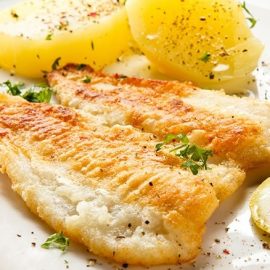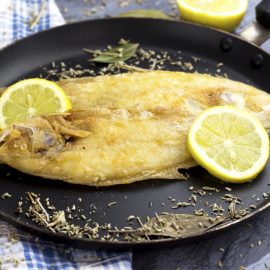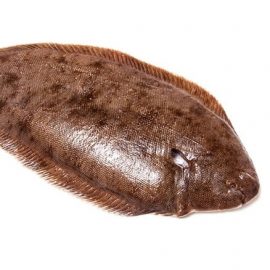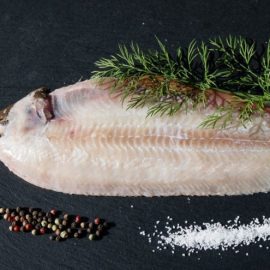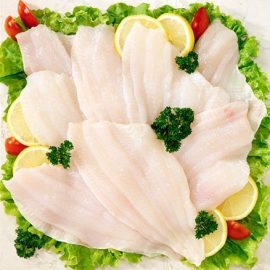
Introduction
The lemon sole is a unique fish species in many areas of the world. Native to the coastal waters of Europe and North America, this species can be found near the coastlines of both continents.
With its trademark yellowish-brown colouration and delicate flavour, it has become an increasingly popular delicacy for seafood lovers. While there is much to learn about this intriguing species, understanding its biology, habitat preferences, and culinary uses can provide invaluable insight into its life cycle and importance in our ecosystem.
Description & Characteristics
Lemon sole, or Microstomus kitt, is a species of flatfish in the family Pleuronectidae. It is an oval-shaped fish with a yellowish-brown body covered with pale spots and darker mottling. The fins are generally reddish-brown or yellowish-brown, and the eyes are located on the dark side of the flatfish’s body.
The lemon sole has a small, compressed body with two eyes on the right side. The left side is typically lighter in colour than the right side and often lacks markings. It has slimy skin, with mouth is large with small teeth, and its tail fin is deeply forked.
They also possess two barbels on their upper jaw, which help them locate food in murky waters or during night-time feeding hours.
Lemon soles usually grow to around 30 cm (12 inches) in length but can reach up to 50 cm (20 inches). In some areas, they can be fished commercially, but they are mostly caught by recreational anglers using line or netting methods.
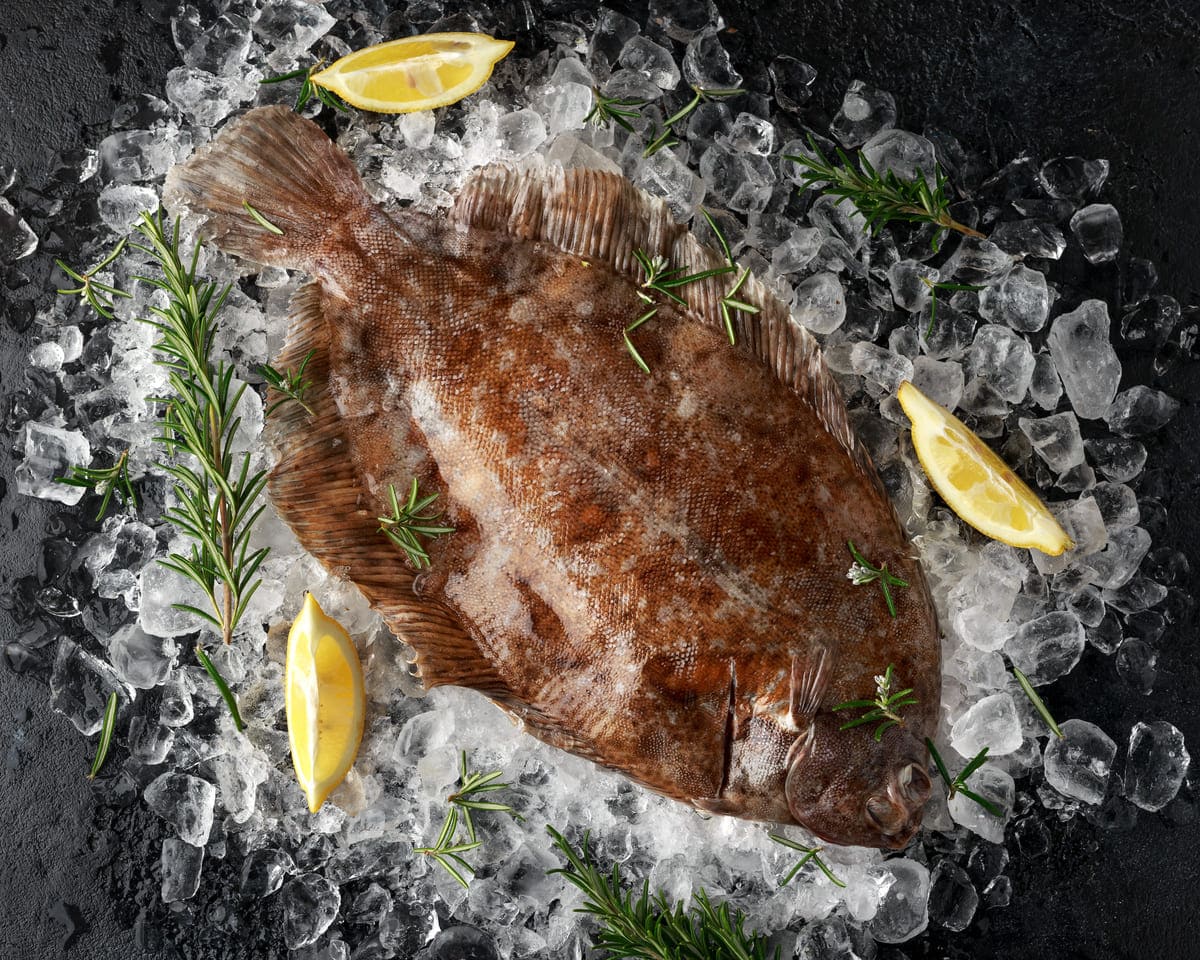
Etymology
Lemon sole tastes nothing like lemon but rather sweet and delicate. Its name refers instead to its lemon-like shape.
Lemon sole is a contradiction, as it isn’t a sole fish, nor does it have a lemony taste. Lemon sole probably gets its name from the French term “sole limande”. Limande may be derived from lime ( French word for file- a tool for smoothing metal or wood), which describes the fish’s skin texture. Limande may also be a French term for silt – limon.
Habitat And Distribution
Lemon sole is a flatfish found in the eastern Atlantic and Mediterranean Seas. They are widely distributed throughout this region, ranging from Norway to Morocco, on the western coast of Africa. It is estimated that there are over 10 million lemon soles in the North Sea alone.
Lemon sole inhabits sandy bottoms and muddy areas at depths of up to 2,000 meters. In addition to these environments, they may also be found in estuaries and brackish water habitats. The most common environment for the lemon sole is shallow coastal waters, between 40 and 200 meters deep. They prefer temperatures between 10-18 Celsius and salinity levels of 30-40 PSU (parts per thousand).
During spawning season, adults migrate to deeper waters for better protection from predators. Lemon soles have a life span of up to 12 years and can reach a maximum length of 50 cm.
Lemon Sole’s Diet
The diet of the lemon sole is highly varied and consists of crustaceans, molluscs, worms, starfish, and other small fish. It feeds most actively during the day and is known to take advantage of opportunities presented by the tides. Although this species is primarily a carnivore, it can also feed on planktonic organisms with limited food sources.
In terms of its preferred prey, studies have shown that shrimp, crabs and other crustaceans are typically consumed more often than any other type of prey. When it comes to smaller animals, like worms and molluscs, tend to be taken as supplemental food sources when more abundant prey items are not available. Additionally, evidence suggests that this species may sometimes feed on organic material from the seafloor when other options are unavailable.
Life Cycle Of Lemon Sole
The life cycle of a lemon sole is an interesting one. It begins with eggs laid in the springtime, usually near the shoreline. The eggs hatch into larvae, which drift in the water currents for a few weeks before settling on the seafloor and maturing into adults. During this time, they feed on plankton and small crustaceans such as shrimp and crab.
Once mature, lemon soles can live up to 15 years and reach lengths up to 30 centimetres. They prefer sandy or muddy bottoms of estuaries, bays, and other shallow coastal waters where they can hide from predators.
As bottom-dwellers, they display a unique behaviour called “cryptic colouration”, which helps them blend in with their environment to protect them from potential predators.
These fish also travel long distances during spawning—up to 300 kilometres from their typical habitats—so their eggs can find suitable places to hatch. This shows just how adaptable these creatures are; they have incredible resilience when faced with environmental changes due to climate change or overfishing.
By travelling far distances to spawn, they ensure that their species will continue to thrive despite any external pressures that come their way. Through this natural adaptation process, lemon sole populations have remained relatively stable even in times of crisis.
Lemon Sole Fisheries
In terms of fisheries, this species plays a vital role in commercial fishing, with an estimated catch of about 12 million tonnes per year. In particular, France, the United Kingdom and Ireland are among the largest fishing nations for this species.
In terms of economics, lemon sole fisheries have a value of approximately 1 billion euros per year. This makes it one of Northern Europe’s most valuable fish species, accounting for about 20 percent of all landings in France and 8 percent in Ireland.
The primary method to catch lemon sole is trawling with bottom-set nets or mid-water trawls. Other methods include handlines, long lines and traps.

Sustainability
The sustainability of Lemon Sole is an essential consideration for anglers, environmentalists, and consumers alike. With increasing pressure on global fisheries, the need to ensure that lemon sole can be sustainably harvested is essential.
The population sizes vary between areas depending on habitat quality and exploitation pressure. Generally, stocks are stable or increasing where reasonable management measures are in place.
For instance, catches of lemon sole off Scotland have increased by more than 10 percent since 2015 due to improved management which has helped to maintain healthy populations. Furthermore, catches off Ireland have also risen over recent years, up 75% since 2008, due to improved stock assessment techniques and increased monitoring efforts such as observer schemes onboard fishing vessels.
This species is also managed through quotas which limit the amount caught each year based on scientific advice from ICES (International Council for the Exploration of the Sea). These management measures help ensure sustainable harvesting practices are followed so that future generations can continue to enjoy this valuable resource.
Lemon Sole As Food
Lemon sole is a type of fish prized for its unique flavour and texture, and as such, it has become a popular ingredient in many dishes. The ability to prepare this meal in various ways has made it one of the most sought-after ingredients in many kitchens.
Lemon sole offers the following qualities:
- The flesh is delicate and flaky, making it easy to cook.
- Due to its mild flavour, it pairs well with diverse sauces and seasonings.
- Its meaty texture is surprisingly firm yet tender when cooked properly. Lastly, it is nutritious and rich in essential minerals like omega-3 fatty acids.
Lemon sole as food and taste can be likened to a precious gemstone – delicate yet firm, mild yet flavorful, healthy yet delicious. It can be prepared in various ways – grilled, poached or steamed – allowing for an endless array of culinary possibilities that will tantalise any palate. Its versatility makes it an excellent option for those who want something special without compromising quality or nutrition.
Additionally, lemon sole can be used as a substitute for other types of fish, such as cod or haddock, due to its similar flavour profile and texture.
How To Prepare Lemon Sole
When preparing lemon soles, a few techniques can be used. The most popular method is pan-fried lemon sole in butter or olive oil with herbs and spices in a large non-stick pan. This will give the fillet a golden brown crust while keeping the inside moist and flavourful. It is important to note that the thinner the fillet, the quicker it will cook over medium heat. Therefore, using thin lemon sole fillets of the lemon sole is recommended for faster cooking times.
Another preparation method is baking the whole lemon sole with butter, lemon juice, and herbs in a foil packet. This technique preserves moisture and infuses flavour into the fish while making it flaky and tender. Baking in a foil packet prevents excessive evaporation, which can lead to the dryness of the fish. If desired, vegetables such as carrots and celery can be included in the container for additional flavour and nutrition.
While these methods provide excellent results when cooking lemon sole, it is essential to remember that proper seasoning is vital. Herbs such as chopped parsley, thyme, oregano, rosemary, and dill work well when added during preparation or serving time. Additionally, garlic and onion powders may enhance flavour without adding extra fat or calories from butter or oil.
As with any seafood dish, it is important to cook lemon sole sparingly, as this will result in an unappealing texture and taste. With these tips in mind, cooks can create delicious meals using this mild-flavoured fish every time!
Best Side Dishes Paired With Lemon Sole
Lemon sole has a delicate flavour and can be enjoyed grilled or as part of a more complex recipe. Several side dishes pair nicely with lemon soles, making the meal more enjoyable.
One of the most popular options is steamed vegetables such as broccoli, carrots, and green beans. The vegetables’ natural sweetness helps to balance the lightness of the fish. They also provide fibre, vitamins, and minerals, which makes this an all-around healthy dish.
Another excellent accompaniment for the lemon sole is mashed potatoes or roasted potatoes. Mashed potatoes have a creamy texture which goes well with the flaky flesh of the fish, while roasted potatoes offer a crunchy contrast in texture and some added flavour from herbs and spices.
Rice is another side dish that pairs nicely with the lemon sole. Pilafs or risottos add complexity to the meal and are great for soaking up any sauce or butter drizzled over the top of the fish.
Finally, salads are always a good option for adding freshness to any meal. A simple green salad works well with lemon sole, but other options, such as pasta salad or potato salad, can also be served alongside it.
No matter what side dish you choose to accompany your lemon sole, it will help to enhance its delicate flavour and make an overall delicious meal!
Popular Lemon Sole Recipes
Lemon sole is considered one of the most popular flat fish in Europe, with its mild flavour and delicate texture making it a favourite among many chefs.
One popular recipe using lemon sole is baked lemon sole with garlic butter. This recipe starts by preheating the oven to 375 degrees Fahrenheit, then combining melted butter, garlic, parsley, and lemon juice in a small bowl. The fish is then placed in an oven-safe dish, and the garlic butter mixture is poured over the top. After baking for twenty minutes, this simple yet delicious meal is ready to be served.
Numerous other recipes can be made with lemon sole as well. It can be fried with herbs and spices to create a crispy crust or even served as part of an elegant seafood platter with other favourites like shrimp and scallops.
Lemon soles can also be used for dishes such as ceviche or risotto for a unique seafood experience. No matter how it’s prepared, lemon sole can make any meal delightful!
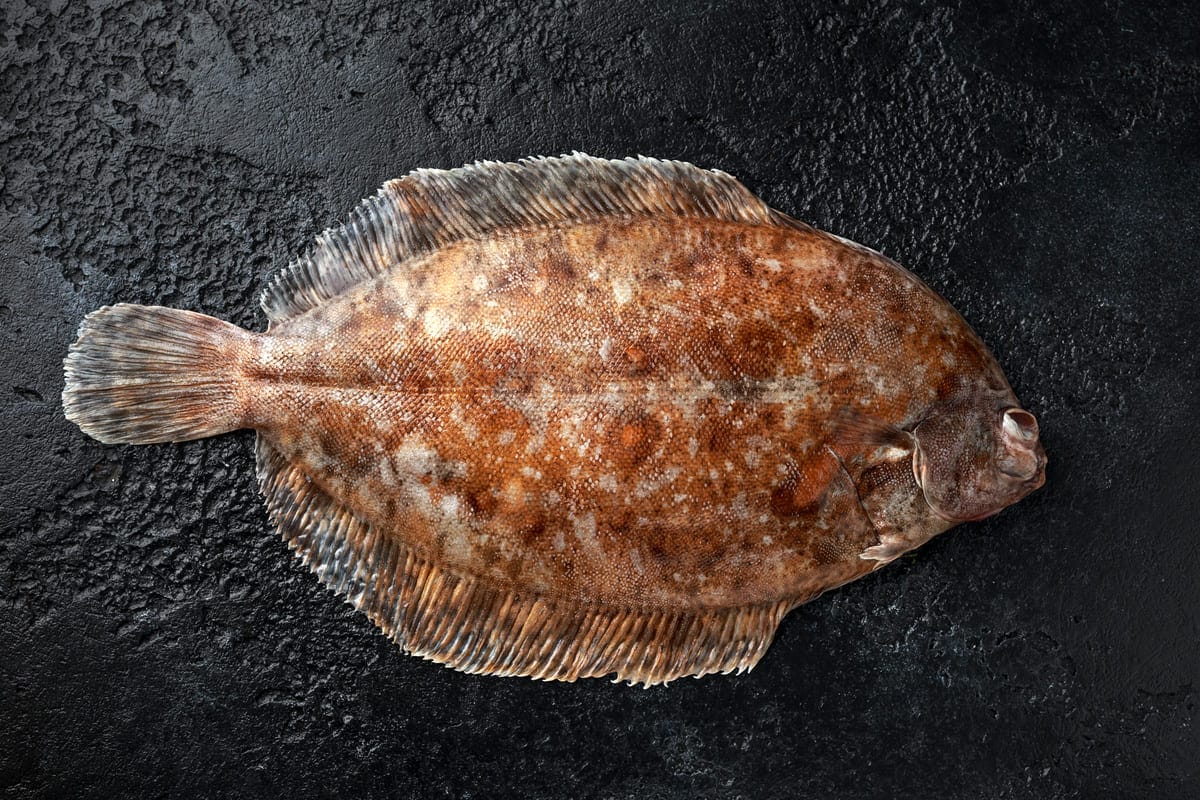
Comparison To Other Fish
Lemon sole, a flatfish of the family Pleuronectidae, is often compared to other fish species due to its delicate flavour and texture. As a member of the same family as flounder and plaice, the lemon sole has many similar characteristics yet stands out in its own right. With its distinctive yellow-brown colouring and large eyes on one side of the head, lemon sole can be easily identified in marketplaces and restaurants.
The texture of lemon sole is milder than that of some flatfish species, such as Dover sole or turbot. It also tends to be slightly more delicate than other species, making it ideal for dishes where the fish does not need to hold its shape during cooking. Its flavour profile is sweet with a hint of citrus tanginess, making it an excellent choice for light sauces and stir-fries. Additionally, its mild flavour pairs exceptionally well with herbs such as parsley or dill, while its flaky texture allows it to absorb flavours readily when cooked in sauce-based dishes.
Though similar to other flatfish in many ways, lemon sole stands out with its distinct colouration and subtle flavours that make it a favourite choice among seafood lovers worldwide.
Conclusion
In conclusion, the nutritional content and health benefits of eating lemon sole make it an attractive option for seafood lovers everywhere. This also makes it an excellent choice for those looking for sustainable seafood options while dining out or preparing meals at home.
Additionally, its mild flavour profile pairs well with many ingredients while cooking times remain short compared to other fish fillets, making it an ideal midweek meal option for busy households who value convenience and nutrition!
